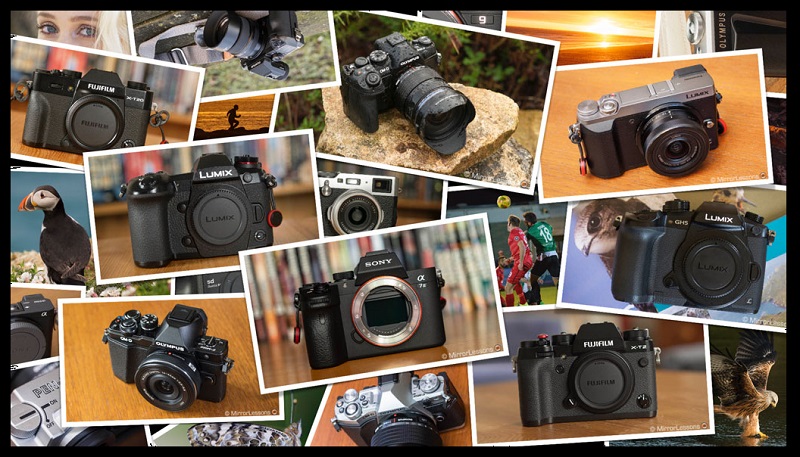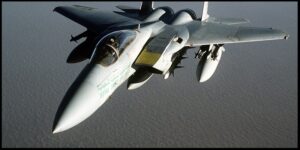
The world of photography has undergone a dramatic shift in recent years. Mirrorless cameras, once seen as niche players, have become the dominant force, offering a compelling combination of compact size, exceptional image quality, and cutting-edge features. But with a plethora of options flooding the market, choosing the “best” mirrorless camera can feel like navigating a labyrinth. Fear not, photography enthusiasts! This comprehensive guide will equip you with the knowledge to pick the perfect mirrorless companion for your shooting style and budget.
Table of Contents
Why Go Mirrorless?
Before diving into specific models, let’s address the fundamental question: why choose mirrorless over traditional DSLR cameras? Here are some key advantages that have swayed photographers:
- Compact and Lightweight: Mirrorless cameras ditch the bulky pentaprism mirror found in DSLRs, resulting in significantly smaller and lighter bodies. This makes them ideal for travel, street photography, and situations where portability is paramount.
- Superior Electronic Viewfinder (EVF): Mirrorless cameras offer a real-time view of the scene through an electronic viewfinder. This allows you to preview exposure, white balance, and other settings before capturing the image, leading to a more precise shooting experience.
- Silent Shooting: Unlike DSLRs with their noisy mirror slaps, mirrorless cameras operate near-silently. This is a game-changer for capturing candid moments in wildlife photography, events, or situations requiring discretion.
- Fast Autofocus: Modern mirrorless cameras boast lightning-fast and accurate autofocus systems, making them adept at tracking moving subjects and ensuring sharp results, even in low-light conditions.
- Advanced Video Capabilities: Many mirrorless cameras excel in video recording, offering features like high-resolution capture, smooth slow-motion, and professional-grade codecs, catering to the growing demand for high-quality videography.
Addressing Common Concerns
While mirrorless cameras offer undeniable advantages, some lingering concerns might hold you back. Here’s a breakdown of common myths and the reality:
- Mirrorless Cameras are Less Powerful: This is no longer true. Top-end mirrorless cameras now rival, and even surpass, DSLRs in terms of image quality, resolution, and low-light performance.
- Limited Lens Selection: The lens selection for mirrorless cameras has grown exponentially in recent years. Major manufacturers and third-party brands offer a vast array of lenses for all kinds of photography disciplines.
- Battery Life: Battery life can be a concern with some mirrorless cameras, especially when using features like the EVF extensively. However, carrying a spare battery or opting for a camera with good battery life can easily mitigate this issue.
Choosing the Right Mirrorless Camera
Now that you’re armed with the knowledge of why mirrorless cameras reign supreme, let’s embark on the quest to find your ideal match. Here are some key factors to consider:
- Full-Frame vs. APS-C Sensor: Mirrorless cameras come with either a full-frame sensor, similar in size to a 35mm film frame, or an APS-C sensor, which is smaller. Full-frame sensors offer superior low-light performance, shallower depth of field, and higher resolution, but come at a premium price. APS-C sensors are more affordable, lighter, and offer a slight crop factor, which can be beneficial for certain situations like wildlife photography.
- Megapixels: While megapixels (MP) play a role in image resolution, it’s not the sole factor determining image quality. Modern mirrorless cameras offer a wide range of megapixel counts, from 24MP to a staggering 100MP. For most photographers, a 24MP to 40MP sensor offers a good balance of resolution and file size.
- Autofocus Performance: Autofocus (AF) is crucial for capturing sharp images, especially with fast-moving subjects. Look for cameras with advanced AF systems that offer features like phase-detect autofocus, eye-tracking autofocus, and subject tracking for seamless focusing.
- Image Stabilization: In-body image stabilization (IBIS) helps counteract camera shake, resulting in sharper images, especially at slower shutter speeds. This is a valuable feature, particularly for handheld shooting or low-light photography.
- Video Capabilities: If videography is a priority, consider mirrorless cameras that offer features like high-resolution capture (4K or 8K), slow-motion recording, and professional-grade codecs for editing flexibility.
- Ergonomics and Handling: The camera should feel comfortable and balanced in your hand. Consider factors like grip size, button layout, and the presence of a tilting or fully articulating touchscreen display for ease of use.
Full-Frame vs. APS-C Sensor: Understanding the Core
Mirrorless cameras, like their DSLR counterparts, come equipped with image sensors – the light-capturing marvels that determine image quality. However, mirrorless cameras offer two primary sensor sizes: full-frame and APS-C (APS-C refers to a specific sensor size used by multiple brands).
- Full-frame sensors: Mimicking the size of a 35mm film frame, full-frame sensors deliver exceptional low-light performance, shallower depth of field (ideal for blurring backgrounds), and superior image quality due to their larger surface area. However, these powerhouses come at a premium price.
- APS-C sensors: Offering a smaller size and more affordable price tag, APS-C sensors are excellent for everyday photography. They produce great image quality, albeit with slightly less low-light capability compared to full-frame sensors. Additionally, APS-C cameras boast a crop factor, which effectively increases the focal length of your lenses, making them ideal for telephoto photography.
Understanding your shooting preferences is crucial. If you prioritize portability, excellent value for money, and exceptional travel companion qualities, APS-C cameras shine. But if you crave professional-grade image quality, low-light mastery, and a shallow depth-of-field for stunning portraits, full-frame is the way to go.
Best Mirrorless Camera in 2024
The mirrorless camera market is a dynamic landscape with new contenders emerging every year. Here’s a curated list of top performers across various categories, catering to diverse needs and budgets:
1. Overall Excellence:
- Nikon Z8: This powerhouse camera boasts a 45.7 MP full-frame sensor, exceptional 8K video recording, and a blazing-fast autofocus system. It’s a dream camera for professional photographers and videographers seeking the absolute best. This top-of-the-line camera has received rave reviews for its exceptional image quality, thanks to its high-resolution sensor. Reviewers praise its phenomenal 8K video capabilities and the blazing-fast autofocus system that locks onto subjects with impressive accuracy. However, as expected for a pro-level camera, the price tag reflects its prowess, with a starting price around $8,000: USD.
2. Best for Enthusiasts:
- Sony A7 IV: Offering a perfect blend of performance and value, the Sony A7 IV features a 33 MP full-frame sensor, excellent autofocus capabilities, and robust video features. It’s a versatile option for photographers who dabble in both stills and video. This versatile full-frame camera strikes a nice balance between features and affordability. Users love its well-rounded performance, praising its excellent image quality in various lighting conditions, the reliable autofocus system, and the user-friendly interface. The A7 IV falls into a more mid-range price category, typically starting around $3,400: USD.
3. Best for Beginners:
- Canon EOS R10: This APS-C camera strikes a sweet spot between affordability and performance. It boasts a 24.2 MP sensor, a beginner-friendly interface, and a fantastic autofocus system, making it an ideal choice for those starting their photographic journey. This beginner-friendly camera has garnered positive reviews for its ease of use, excellent image quality for its APS-C sensor size, and the fantastic autofocus system that keeps pace with moving subjects. Budget-conscious enthusiasts will appreciate the price tag, which starts around $800: USD.
4. Best High-Resolution Workhorse:
- Sony A7R V: With a monstrous 61 MP full-frame sensor, the A7R V is a resolution monster. It caters to professional photographers who require exceptional detail in their images, like landscape and architectural photographers. This camera is a dream come true for photographers who prioritize megapixel muscle. Reviewers are impressed by the mind-blowing detail captured by the high-resolution sensor, making it ideal for professional applications like landscape and architectural photography. However, this level of resolution comes at a cost, with a starting price tag around $4,500: USD.
5. Best Compact Full-Frame Hybrid for Video:
- Panasonic Lumix S5 IIX: This full-frame camera packs a punch for videographers. It offers exceptional video capabilities with 5.9K recording, outstanding image stabilization, and a compact and weather-sealed body, making it perfect for shooting on the go. This full-frame camera is a favorite among videographers. Reviewers commend its outstanding video capabilities, including the ability to record in 5.9K resolution. The effective image stabilization system ensures smooth footage, and the compact, weather-sealed body makes it perfect for shooting on the go. Expect to pay around $4,000: USD for this feature-packed video powerhouse.
6. Best APS-C Mirrorless Camera from Canon:
- Canon EOS R7: This APS-C powerhouse boasts a 32.5 MP sensor, blazing-fast autofocus ideal for capturing action, and a fantastic grip for comfortable shooting. It’s a perfect choice for sports and wildlife photographers who prefer the advantages of a crop sensor. This APS-C camera has been praised for its impressive 32.5 MP sensor, capable of capturing sharp and detailed images. The autofocus system is particularly noteworthy for its speed and accuracy, making it a great choice for capturing fast-paced action. The comfortable grip and intuitive controls make it a joy to use. The price tag for this action-oriented camera falls around $1,800: USD.
7. Best Mirrorless Camera with Retro Style:
- Nikon Z fc: This camera combines modern technology with a classic rangefinder design. It features a 20.9 MP APS-C sensor, excellent image quality, and a user-friendly interface, making it a great choice for photography enthusiasts who appreciate a touch of vintage charm. This charming camera with a retro aesthetic has won the hearts of photography enthusiasts who appreciate a blend of classic looks and modern features. Reviewers love the excellent image quality it delivers from its APS-C sensor and the user-friendly interface that makes it easy to learn the ropes of photography. The price for this stylish camera starts around $1,100: USD.
8. Best Value for Budget-Conscious Enthusiasts:
- Fujifilm X-T30 II: This APS-C camera offers a fantastic 26.1 MP sensor, a superb hybrid autofocus system, and Fujifilm’s renowned film simulations for beautiful color rendition. Its compact size and affordable price tag make it a compelling option for budget-minded photographers. This budget-friendly option has impressed users with its fantastic image quality, thanks to the 26.1 MP sensor and Fujifilm’s renowned film simulations that produce beautiful colors. The hybrid autofocus system performs admirably, and the compact size makes it a great travel companion. The price for this value-packed camera starts around $900: USD.
9. Mirrorless Powerhouse for Sports and Wildlife:
- Sony A9 II: While not the newest model, the A9 II remains a powerhouse for capturing fast-paced action. With a stacked 24.2 MP full-frame sensor, lightning-fast autofocus, and blackout-free shooting experience, it’s ideal for professional sports and wildlife photographers. This camera might not be the latest model, but it remains a beast for professional sports and wildlife photographers. Reviewers continue to be impressed by its ability to capture fast-action moments with its stacked sensor, lightning-fast autofocus, and blackout-free viewfinder. Expect a professional-grade price tag around $4,000: USD.
10. Compact Powerhouse for Everyday Photography:
- Sony ZV-E10: This lightweight and vlogger-friendly camera features a 24.2 MP APS-C sensor, excellent autofocus for tracking subjects, and a fully articulating touchscreen for easy framing. It’s a perfect choice for everyday photography, vlogging, and content creation. This lightweight vlogging camera is a popular choice for content creators. Users love its excellent autofocus for keeping subjects sharp, the fully articulating touchscreen for easy framing, and the compact size that makes it perfect for on-the-go shooting. The price for this vlogging powerhouse starts around $700: USD.
This list provides a starting point, but the “best” camera ultimately depends on your individual needs and budget.
Frequently Asked Questions: Mirrorless Mysteries Demystified
Let’s address some of the most common questions that plague aspiring mirrorless camera users:
- Mirrorless vs. DSLR: Which is Right for Me?
Mirrorless cameras offer several advantages over DSLRs, including smaller size, lighter weight, superior electronic viewfinders, and often faster autofocus systems. However, DSLRs may have a slight edge in battery life and might be better suited for photographers who prefer a traditional optical viewfinder experience.
- Full-frame vs. APS-C Sensor: Does Size Matter?
As discussed earlier, full-frame sensors offer superior low-light performance, shallower depth-of-field, and higher resolution. However, they come at a premium price and often translate to larger and heavier cameras. APS-C sensors are more affordable, compact, and deliver excellent image quality, making them a great choice for beginners and travel enthusiasts.
- What About Lenses?
The lens you choose has a significant impact on your image quality and shooting experience. Mirrorless cameras offer a wide range of native lenses from the camera manufacturer, as well as compatibility with third-party lenses through adapters. Consider the focal length (wide-angle, zoom, etc.) and aperture (maximum light-gathering capability) to find lenses that suit your shooting style.
- Should I Consider Megapixels?
Megapixels refer to the number of pixels on a camera sensor, and it translates to image resolution. While higher megapixel counts can produce larger and more detailed images, it’s not the sole factor determining image quality. Sensor size, image processing, and lens quality all play a crucial role.
- Is Image Stabilization Crucial?
Image stabilization is incredibly beneficial, especially when shooting in low-light conditions or with long lenses. It helps to counteract camera shake, ensuring sharper images. Look for cameras with either in-body image stabilization (IBIS) or lens stabilization for optimal results.
Conclusion: Embarking on Your Mirrorless Journey
Choosing the right mirrorless camera is an exciting step in your photographic journey. By understanding your shooting style, budget, and priorities, you can navigate the world of mirrorless marvels with confidence. Remember, the “best” camera is the one that inspires you to create and capture the world around you in captivating ways. So, experiment, explore, and unleash your inner photographer with the perfect mirrorless companion by your side!







